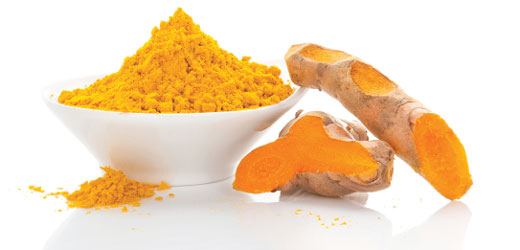Turmeric: The spice of life
By Nick Rose, M.S., PCC Nutrition Educator
This article was originally published in January 2017

Turmeric is the spice that gives your favorite curry powders and mustards their bright yellow color, and now this magical plant is popping up in kale chips, packaged teas, chilled drinks, nutrition bars and dietary supplements. Turmeric is most often ground into a powder and used as a spice, but fresh turmeric also is available in the produce department.
What’s all the buzz about turmeric?
The revered Dr. Andrew Weil states, “Adding turmeric to your diet is one of the best moves toward optimal health you can make.” That’s because turmeric contains curcumin, a nutrient whose potential health benefits have been the subject of thousands of medical studies, with most of the research focused on inflammatory disorders like arthritis, colitis and gastritis (stomach ulcers).
Further research has explored the benefits of curcumin in autoimmune disorders, cancer, Alzheimer’s and many other conditions. Beyond curcumin, turmeric also contains dozens of additional phytonutrients, beta-carotene, and trace minerals that help explain its various health benefits.
How do I get the most benefits from turmeric?
It’s important to know that curcumin is poorly absorbed; and it stays in your system for only a couple hours. You can boost the health benefits of turmeric by consuming it with black pepper, and some fats. Fats help promote greater absorption and black pepper keeps the curcumin in your system longer.
It’s interesting to note that traditionally, turmeric is consumed in combination with other spices (including black pepper) as part of a curry powder, and cooked with either ghee or coconut milk (fats). Today, most supplements add a pinch of pepper to help boost turmeric’s benefits.
For your health, try to incorporate up to 1 to 3 teaspoons of turmeric into your daily diet. There are several ready-to-drink beverages that combine turmeric with other spices, providing a convenient way for you to keep your cells saturated with this golden spice. Try a number of elixirs from Temple Turmeric, including flavors like Turmeric Ginger-Aid and Blueberry Hibiscus, plus a line of Organic Turmeric Drinks from Healthee, available at PCC.
Can you consume too much turmeric?
Turmeric has a long history of use: It has been a part of the daily diet in India and other Asian countries for thousands of years. Turmeric supplements have a much higher concentration of curcumin than fresh turmeric — 95 percent versus three percent — so it’s a good idea to start slowly with supplements and gradually increase your intake.
There has been some concern about lead contamination in turmeric powder, but a recent report by Consumer Lab found very few instances of lead contamination in turmeric powders and supplements.
The most common complaint when using fresh or dried turmeric in the kitchen is its potential to stain — your cutting board, your hands, clothes and possibly even your teeth. Thanks to this colorful reputation, more and more foods are now using turmeric as a natural food coloring. This might not be enough to provide a therapeutic dose, but it’s certainly better than the artificial colorings being replaced by this amazing spice.
